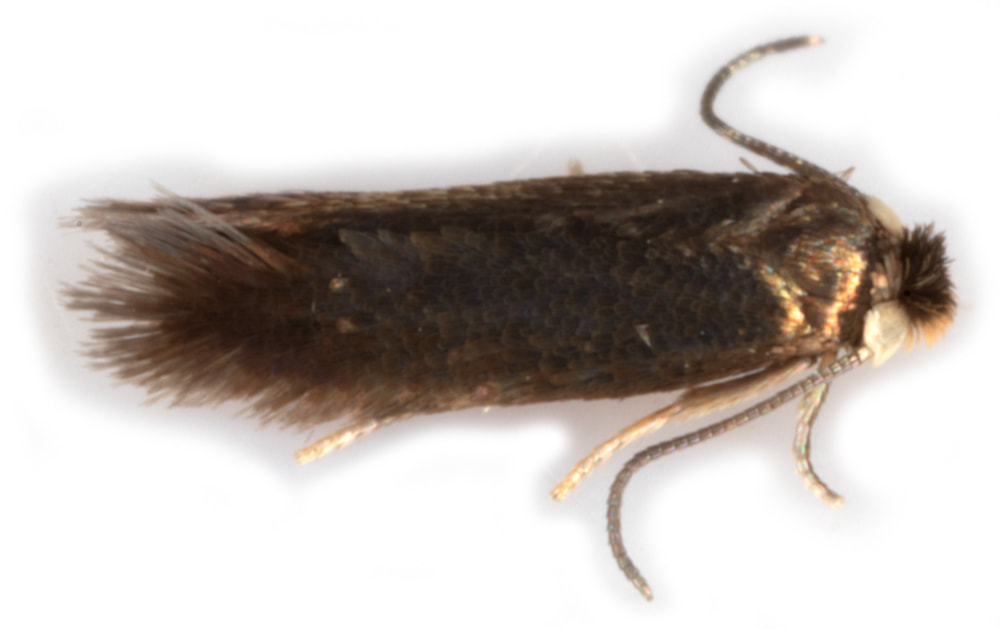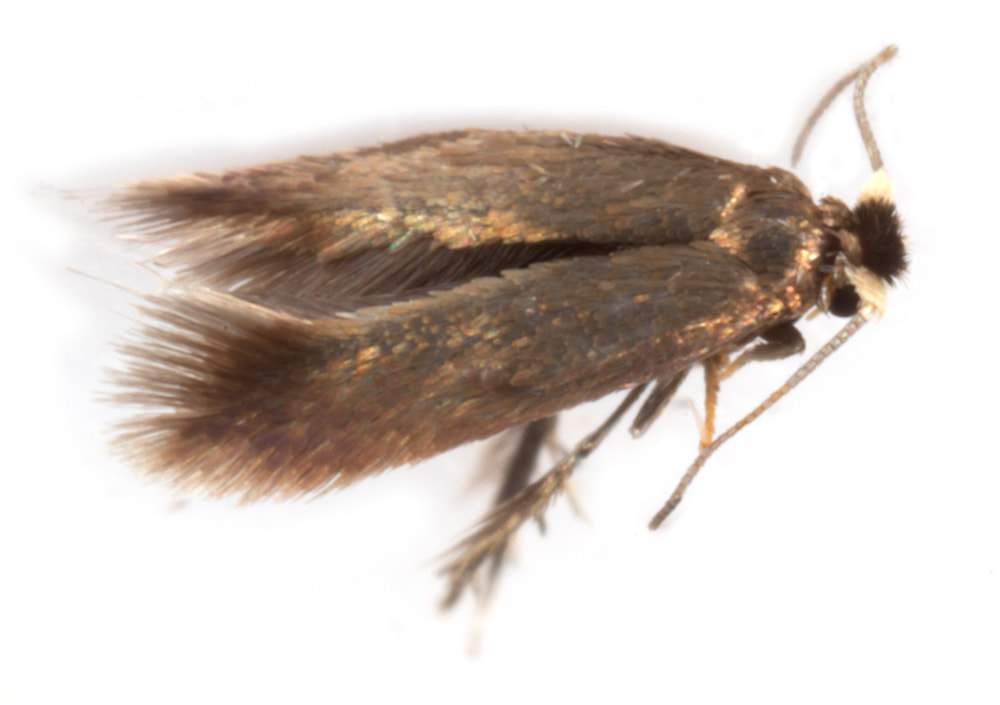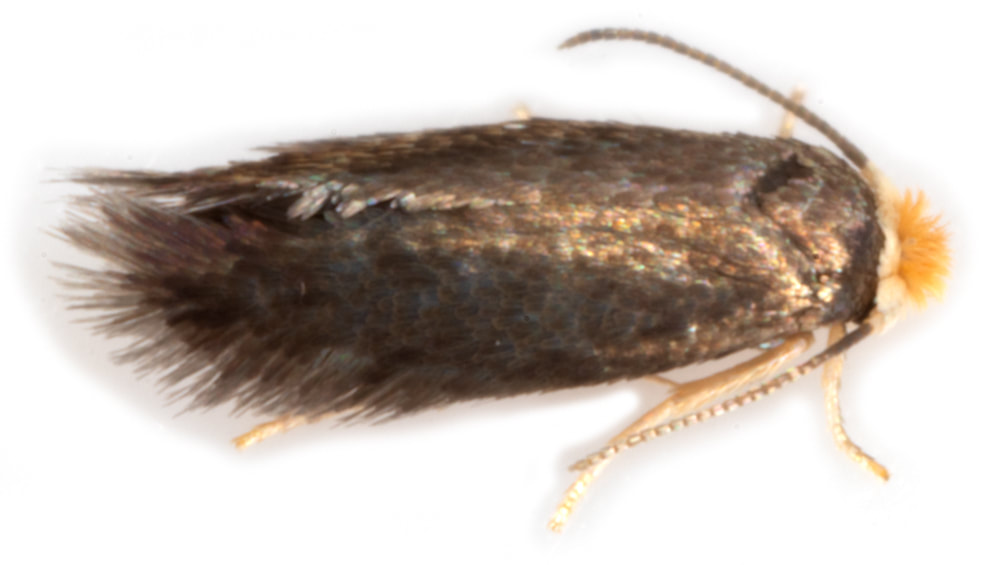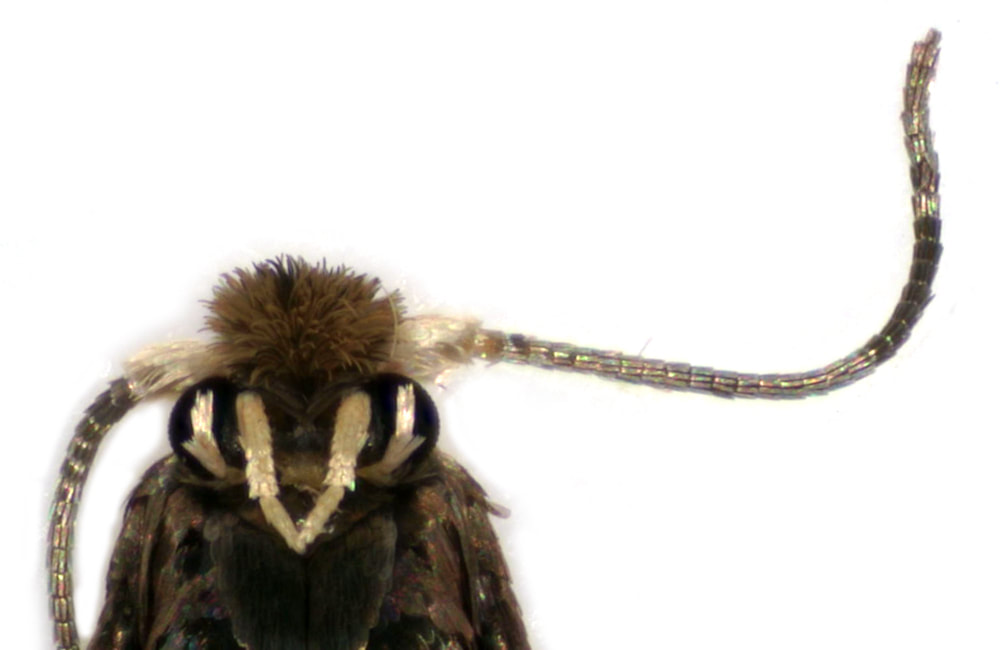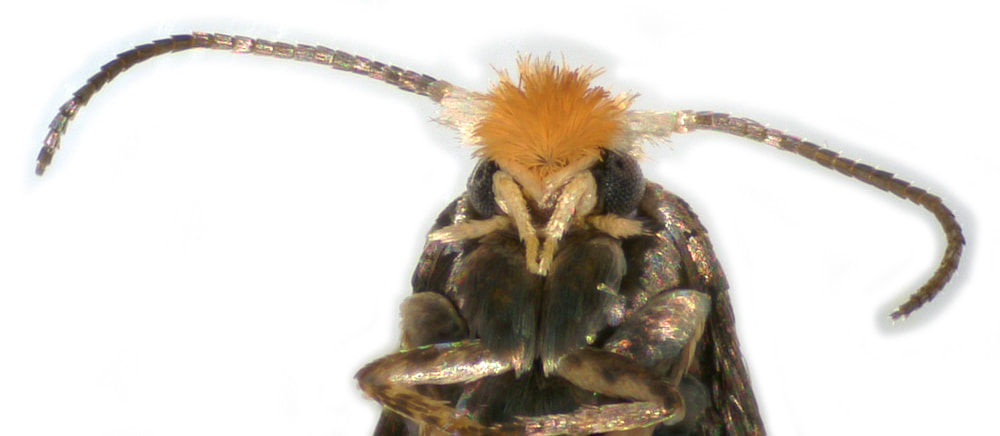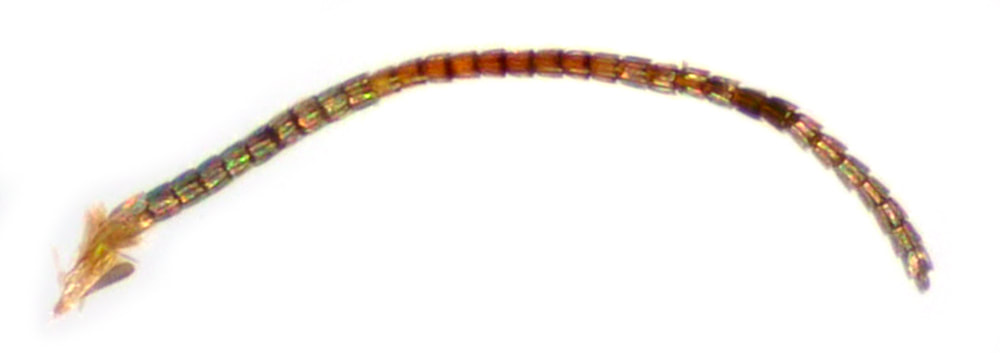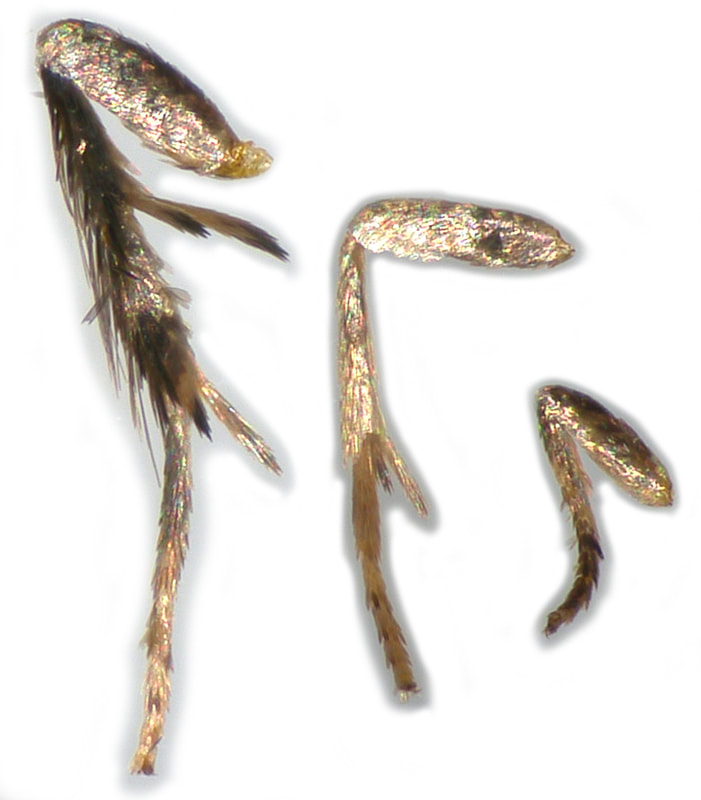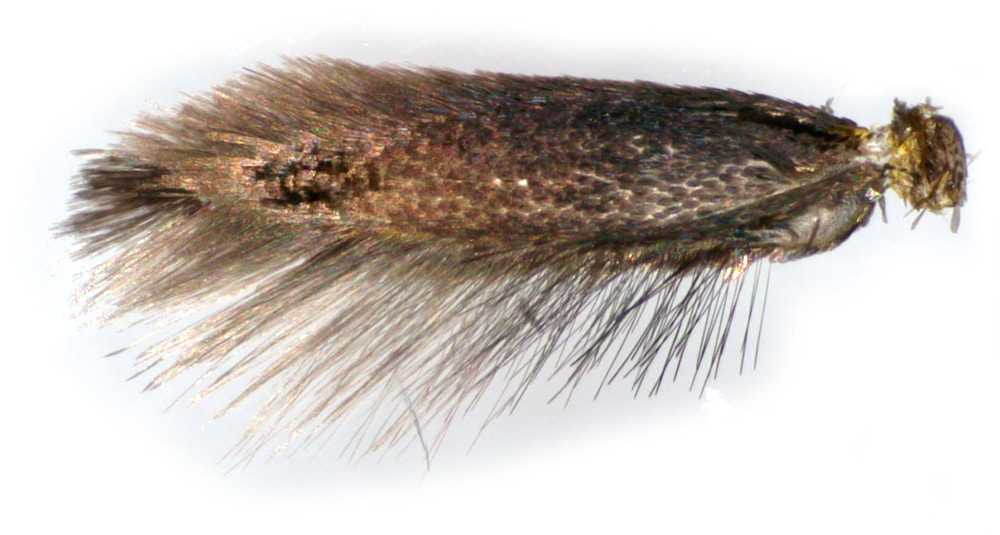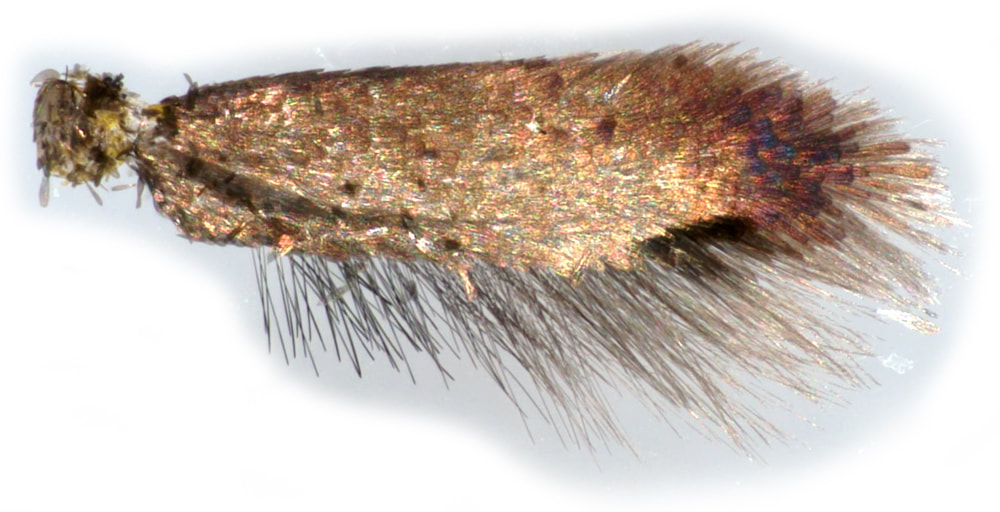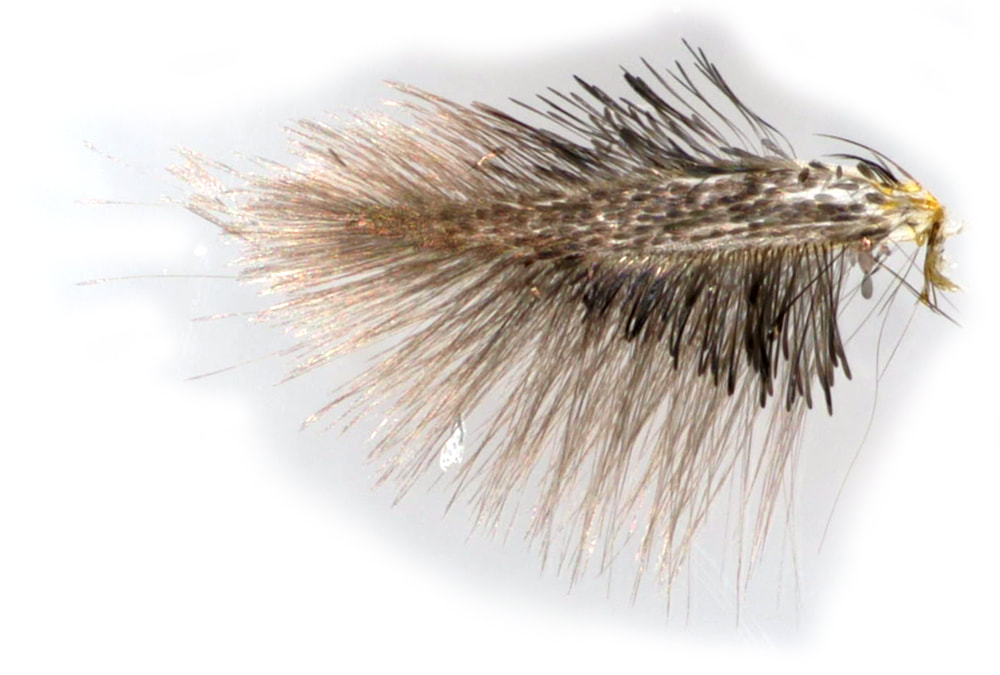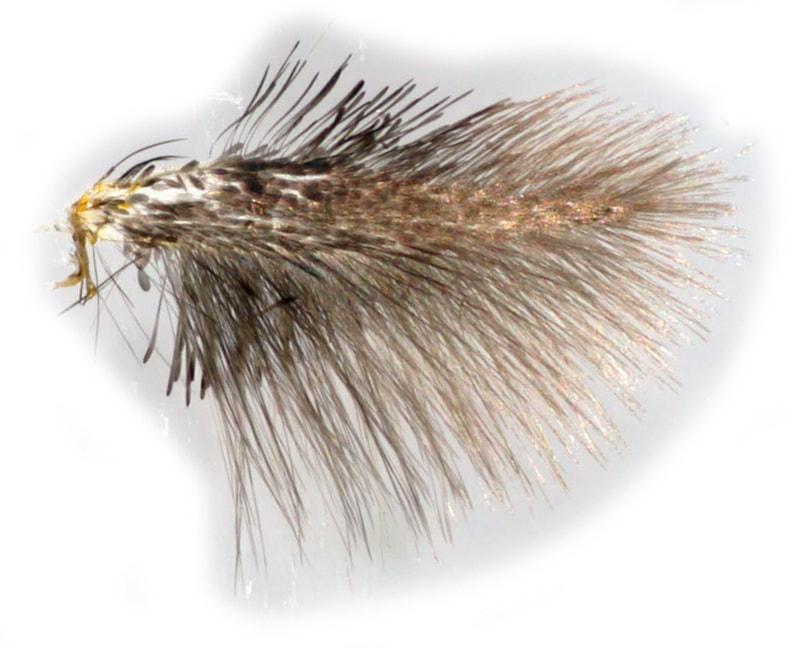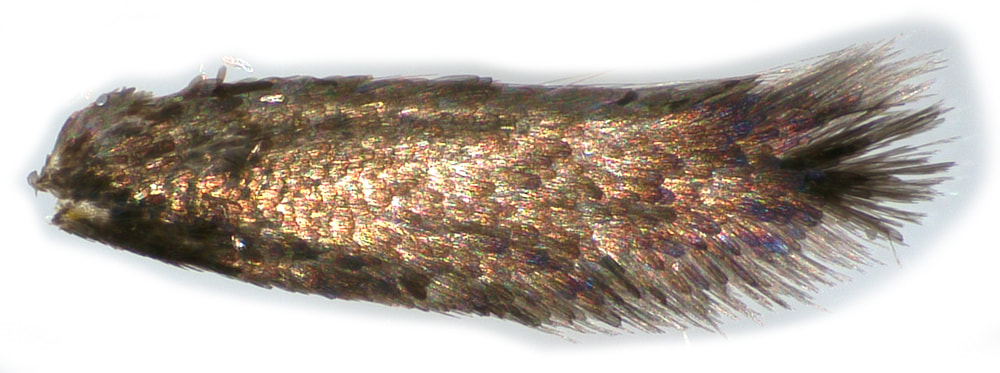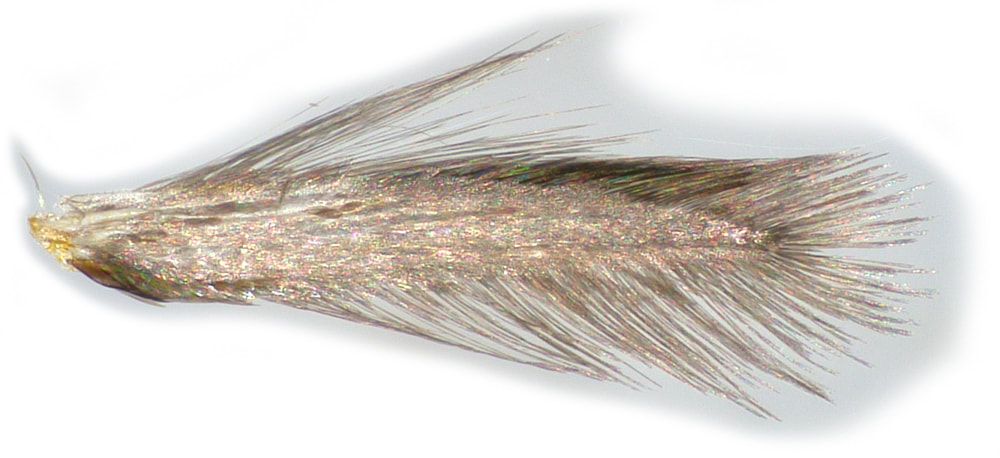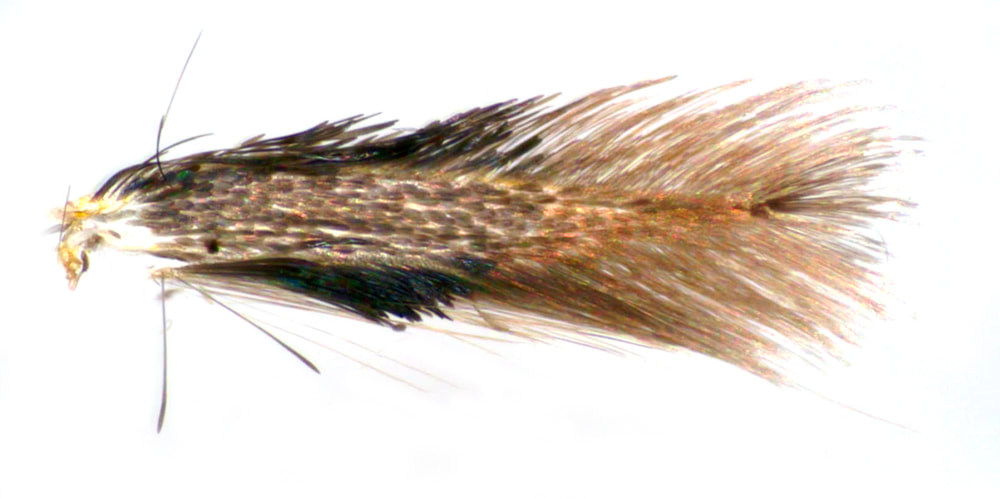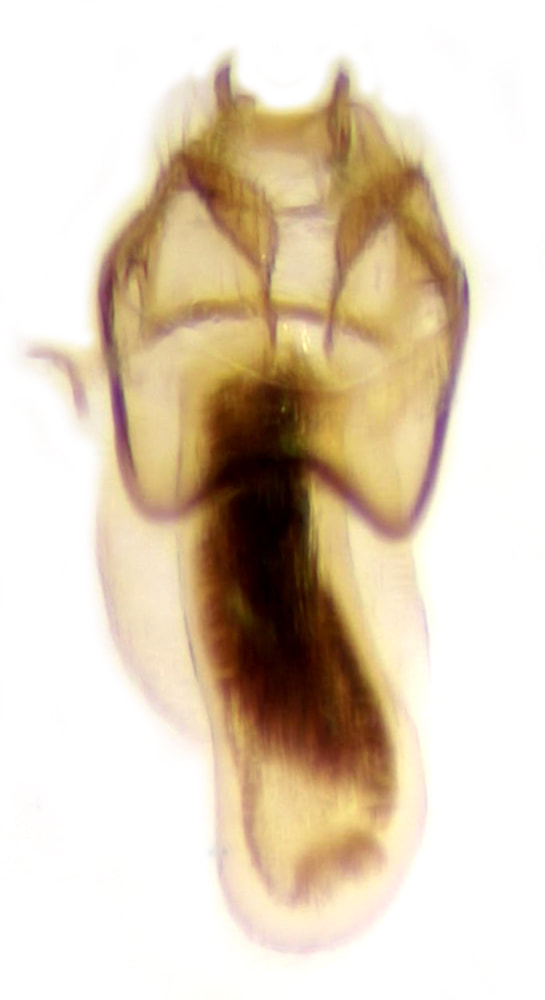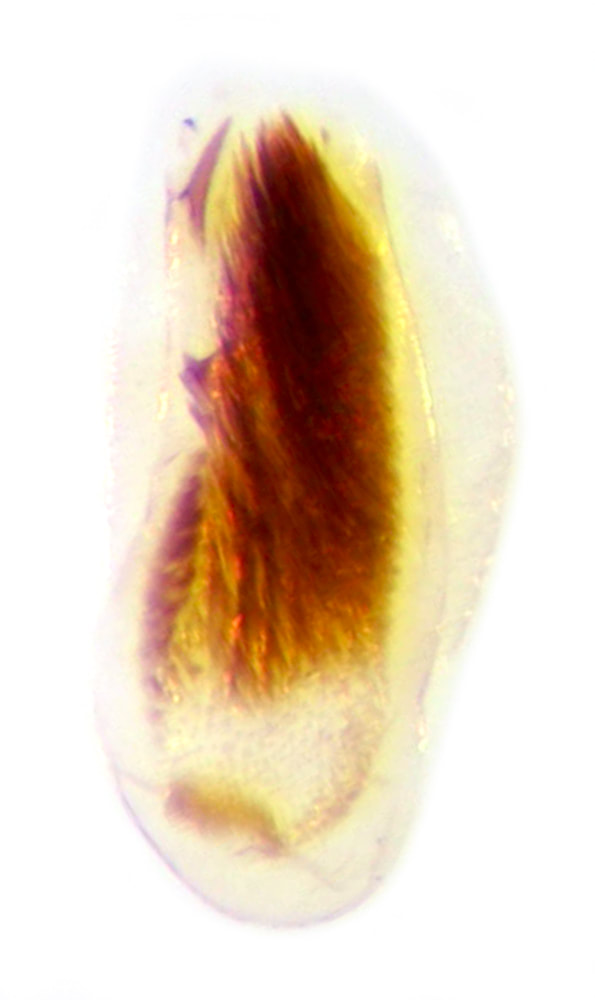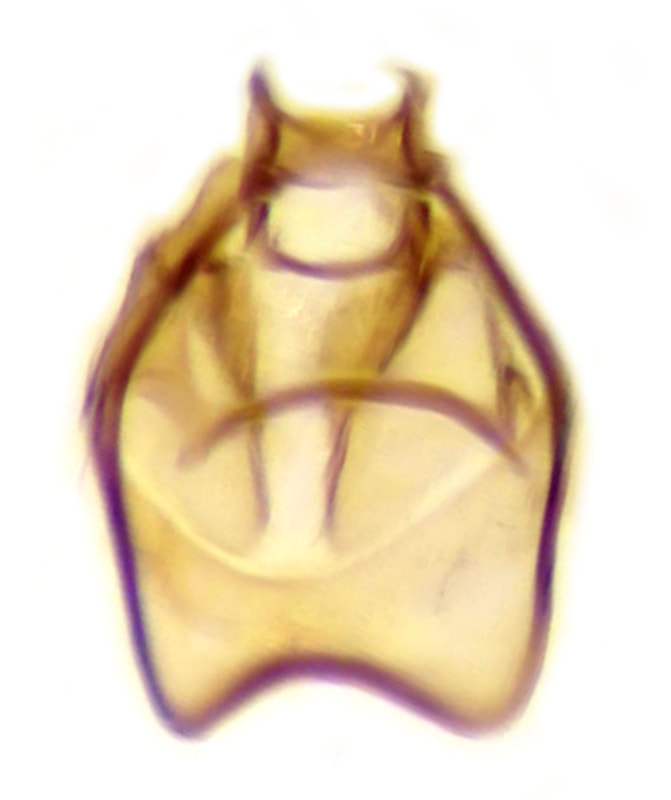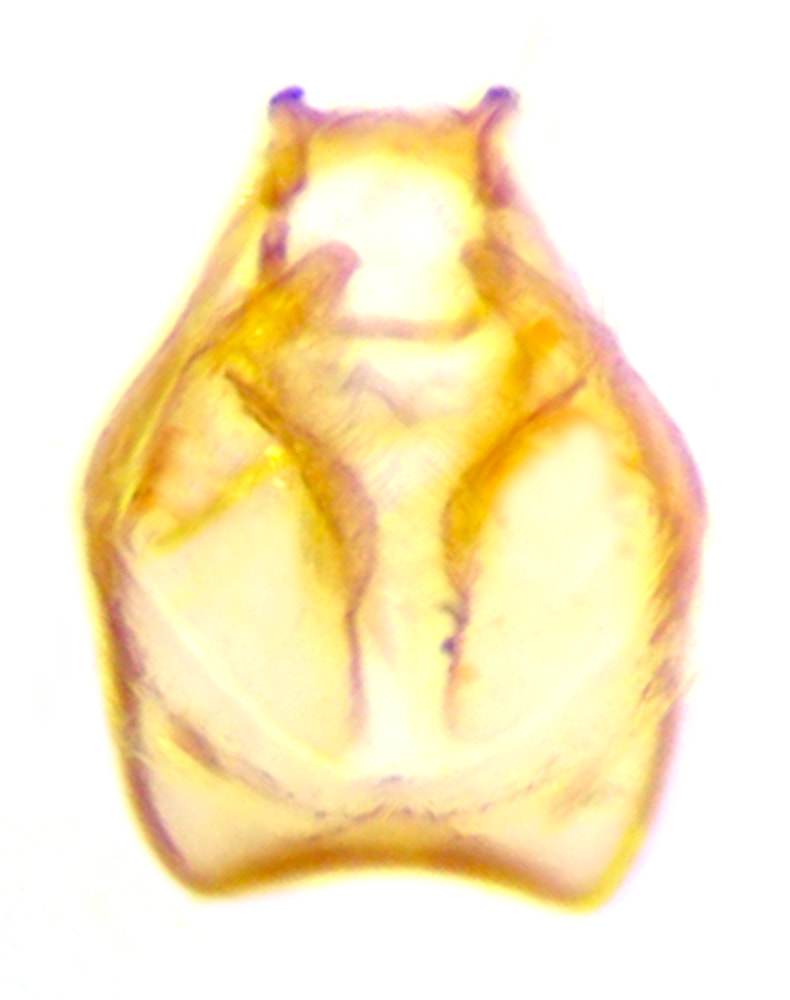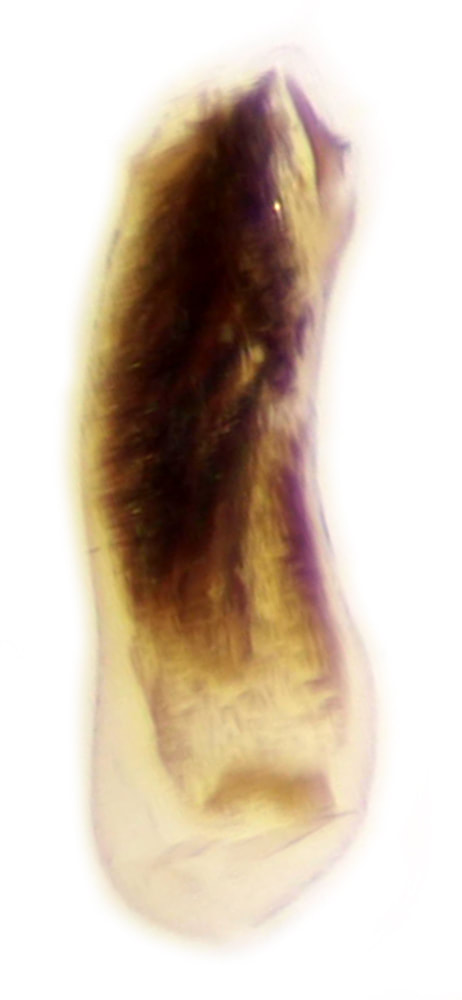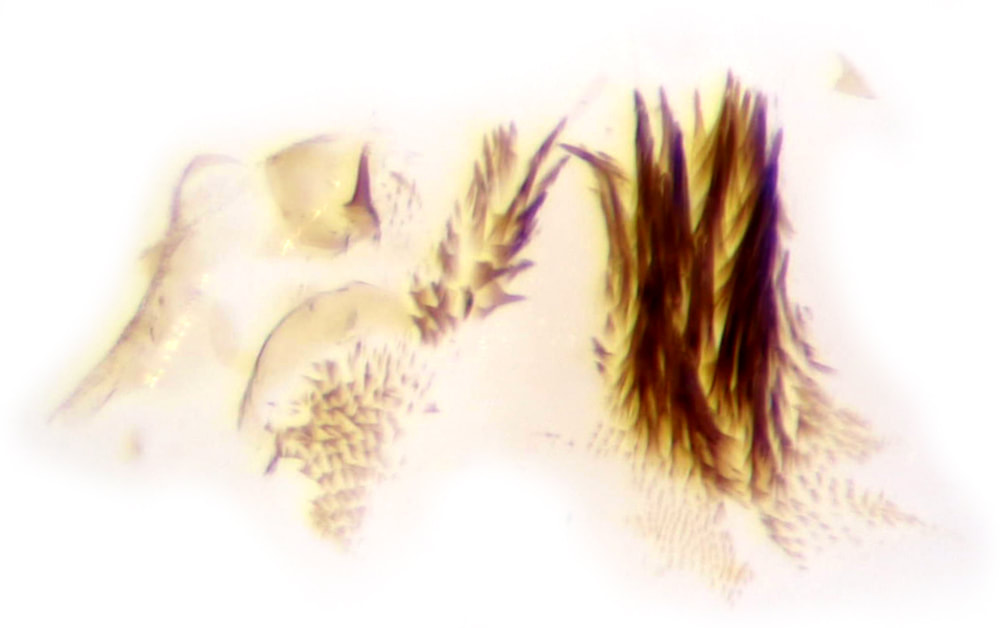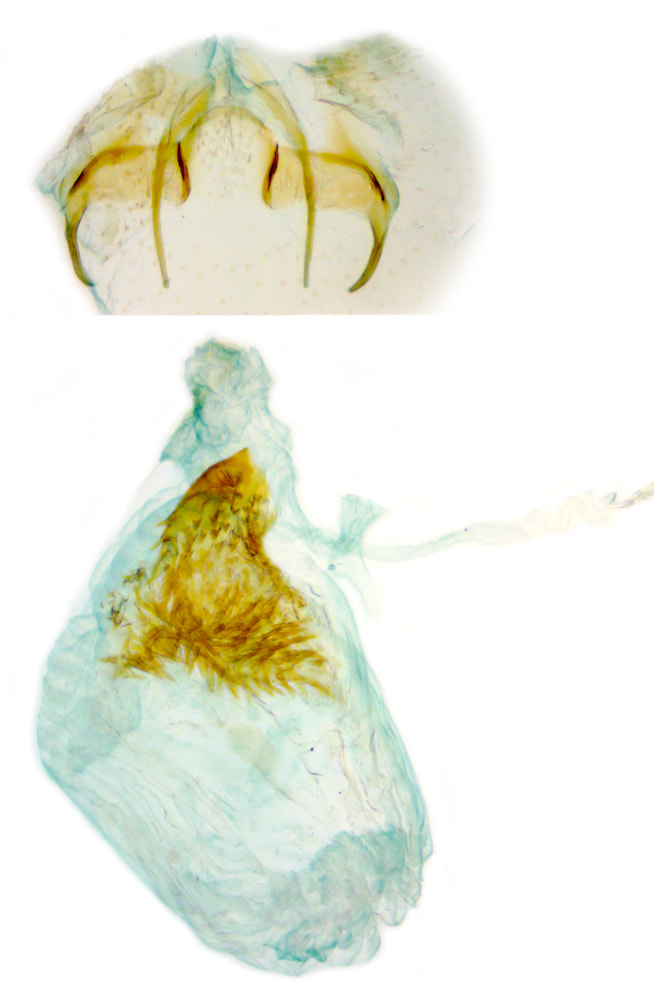04.060 Stigmella ruficapitella (Red-headed Dot)
ws: 4.5-5.75mm (MBGBI1); bivoltine May-Jun, Jul-Aug; leaf-mine in Oak (Quercus spp) Jun-Jul, Sep-Oct; common throughout GB
ID: Forewing without pale markings; terminal cilia of forewing concolorous with wing; head black; hindwing with androconial scales in cilia; androconial scales 1/3 length of cilia > male S.ruficapitella. In S.atricapitella in the androconial scales are 2/3 the length of the cilia.
As well as being shorter the androconial scales of S.ruficapitella are significantly more conspicuous than those of S.atricapitella.
Females have a ferruginous frons, white collar and the hindwing lacks androconial scales.
In the past red-headed forms of the four members of the atricapitella (all oak-feeders) group were lumped as S.ruficapitella (female S.ruficapitella, and S.atricapitella(?) and both sexes of S.roborella and S.svenssoni) - this is the historical reason for the specific name and presumably for the inappropriate English name (when applied to the male).
As well as being shorter the androconial scales of S.ruficapitella are significantly more conspicuous than those of S.atricapitella.
Females have a ferruginous frons, white collar and the hindwing lacks androconial scales.
In the past red-headed forms of the four members of the atricapitella (all oak-feeders) group were lumped as S.ruficapitella (female S.ruficapitella, and S.atricapitella(?) and both sexes of S.roborella and S.svenssoni) - this is the historical reason for the specific name and presumably for the inappropriate English name (when applied to the male).
Male genitalia
Both S.atricaptiella and S.ruficapitella are shown at Moth Dissection. There is no indication of any definite difference between these species, but comparison of images suggests the following possibilities for differences in the arrangement of the aedaegal cornuti: 1 - a discrete short stout cornutus at the apex of the aedeagus is more discrete and narrower in S.ruficapitella, stouter and less clearly separated from the main cornutal bundle in S.atricapitella (the aedeagus may need to be rotated to see this cornutus clearly and it may be easier to see in dorsal view) ; 2 - a transverse bar of very fine spines is at the extreme base of the vesica, distinctly basal to the main cornutal bundle, in S.ruficapitella, while in S.atricapitella it is subbasal and level with the base of the main cornutal bundle; 3. S.atricapitella appears to show a larger number of discrete long spines within the main cornutal bundle.
Both S.atricaptiella and S.ruficapitella are shown at Moth Dissection. There is no indication of any definite difference between these species, but comparison of images suggests the following possibilities for differences in the arrangement of the aedaegal cornuti: 1 - a discrete short stout cornutus at the apex of the aedeagus is more discrete and narrower in S.ruficapitella, stouter and less clearly separated from the main cornutal bundle in S.atricapitella (the aedeagus may need to be rotated to see this cornutus clearly and it may be easier to see in dorsal view) ; 2 - a transverse bar of very fine spines is at the extreme base of the vesica, distinctly basal to the main cornutal bundle, in S.ruficapitella, while in S.atricapitella it is subbasal and level with the base of the main cornutal bundle; 3. S.atricapitella appears to show a larger number of discrete long spines within the main cornutal bundle.
§1 Pound Wood, Essex; 11/07/2019; male; fw 2.5mm; to light
§2 Pound Wood, Essex; 27/08/2019; male; fw 3.0mm; to light
§3 pound Wood, Essex; 09/09/2021; female; fw 2.5mm; to light
All images © Chris Lewis
§2 Pound Wood, Essex; 27/08/2019; male; fw 3.0mm; to light
§3 pound Wood, Essex; 09/09/2021; female; fw 2.5mm; to light
All images © Chris Lewis
Page published 18/07/2019 (§1) | §2 added 22/10/2019 | §3 added 24/12/2021
